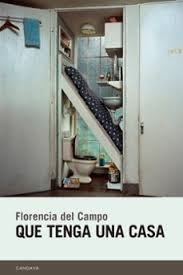
Idioma original: Español
Year of publication: 2024
Valuation: Advisable
If we go with the obvious, the first thing that comes to mind will be one of the hundreds of books in which the house, and what can be included in the concept and how is another topic, occupies a fundamental place: House Taken Over, The Green House, The House of Bernarda Alba, House of leaves, Second home, Leaving home, Empty houses, Ways to get back home, etc.
If we scratch the surface a little and draw on our reading memory, two books will come to mind: Siberia by Daniela Alcívar, also published by Candaya, and Borderlands, (edited by Capitán Swing). The reasons? Its (semi)autobiographical character, its hybrid form in the generic, its relationship with the body, the female authorship (a migrant woman, too), etc.
The case of that Have a field It is a book that plays with genres, since it is as much an autobiographical novel (or is it autofiction?) as it is a story or an essay, and it has, at least in appearance, four legs that function as parallel planes: house, body, family and writing. I say in appearance because, paraphrasing Baroja, “Paint your house but you’ll be painting something else.” In this case, that other thing will be the search for a sense of belonging, an identity, a foothold, a place to return to or flee from, a refuge that can also be a place of isolation and loneliness.
Going to the argument, That has a body This is the book that the author writes while trying to write a book of short stories related to the history of Spain and the history of her paternal family through their houses. But like those damp patches that appear little by little on the walls, there are elements that filter through and permeate the book: personal history, reflection on childhood, the construction of one’s own identity, of the story, etc.
I said earlier that the book has a hybrid character, both in terms of the genre and the subject matter. Also in terms of style. In the beginning, short, sharp sentences and the use of the first person predominate. As the book opens up to different areas, the first and third person begin to alternate (special mention to chapter 10), the sentences become more “conventional”, quotations are introduced, etc.
Finally, perhaps the autobiographical part (or is it autofiction?) is no longer surprising, and I understand that there may be people who get tired of it, but I think that the book takes off when that personal experience is used to take the text to a collective level and to a more essay-like aspect. I am much more interested and find it more universal to consider, for example, what is a house, what is one’s own and what is another’s, what sustains a house (and a body), etc.
PS 1: Reviews of Siberia and of Borderlands They have been in preparation for months but have not been published. Bad decision on my part, they are two very good books.
PS 2: Just today, my parents finally signed the sale of my grandparents’ “summer house”. And even though I haven’t set foot in that house for almost 10 years, images of objects come back to me (the geraniums on the balcony, the lamp in the living room…), people who died more than 30 years ago, childhood friends who God knows where they are now, etc.
Source: https://unlibroaldia.blogspot.com/2024/09/florencia-del-campo-que-tenga-una-casa.html


